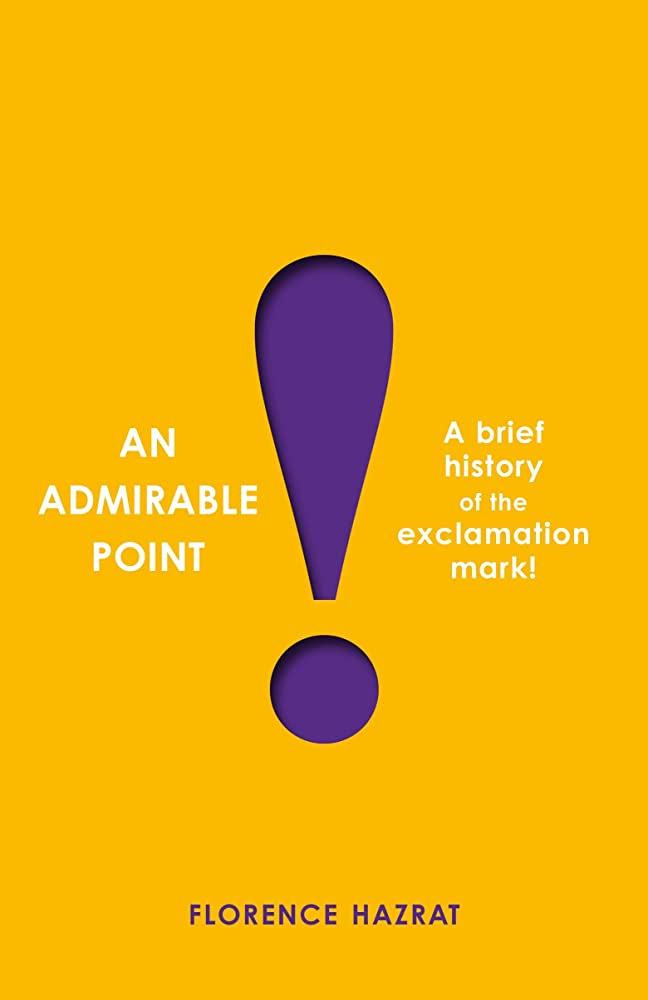Interrobang‽
Punctuation is said to originate almost 5000 years after the invention of the written word, with the Mesha Stele in 840 BCE, a stone inscribed for King Mesha of Moab in present-day Jordan. The text of the stone features full stops or periods between each word and vertical strokes to mark the ends of sections.
Six hundred and forty years later, Aristophanes of Byzantium introduced a system of dots to indicate the amount of breath one would need to complete a given stretch of text when reading aloud, a mid-level dot marking a short passage or komma, a dot at the bottom marking a longer passage or kolon, and for very long pauses, a dot near the top of the line.
Skip ahead eight hundred years, to the 7th century CE, and the Spanish theologian, Isidore of Seville invents the comma, colon, and full stop, adapting Aristophanes’ pauses as grammatical markers. The modern system of punctuation was completed between 1400 and 1600 and has remained static since then: a technology not subject to improvement. There is no Moore’s Law for punctuation marks.
A sorry consequence of this is that the list of books devoted to individual signs cannot go on forever, commas giving way to comforting ellipsis. Instead, we face a full stop. There are fourteen books to write and some have been written already: Semicolon by Cecelia Watson, Fucking Apostrophes by Simon Griffin, and now An Admirable Point, a history of the exclamation mark by Florence Hazrat.
Like its siblings, Hazrat’s book is packed with wonderful factoids. Other names for the exclamation mark include “the screamer, the slammer, the bang, the gasper, and the shriek.” Not surprisingly, “!” is much-derided. F. Scott Fitzgerald compared the exclamation mark to laughing at one’s own joke, while the journalist Philip Cowell called it “the selfie of grammar.” Yet, writes Hazrat, “it exists in nearly every language from Persian to Mandarin.” We clearly need it!
Thanks are due, then, to Alpoleio da Urbisaglia, who first used a full stop with an apostrophe or raised comma to mark “exclamatory or admirative sentences,” an innovation formalized as “!” by Coluccio Salutati in 1399.
Among punctuation marks, “!” is unique in splicing syntax with sentiment:
The power of the exclamation mark to orchestrate tone and feeling makes us nervous, at least some of us. ! has a foot in both camps: grammar and rhetoric; cold hard rule and fuzzy emotion. It sits perched between syntactical exactness and blurry subjectivity, revelling in its double identity, a queer mark that defies binaries…
This helps to explain its massive overuse in email, especially by those, like me, who resist the emoticon. Tone is hard to control over email and a smattering of exclamation marks reassures the reader that all is well. It’s the emoticon’s limit case: a little cheer at the end of a sentence. I use more exclamation marks in email messages than I do in other prose by some enormous ratio. I was thus given pause by Hazrat’s warning: “If any punctuation mark has the potential to look like a phallus, it must be !.” Dear email recipients: that was not what I intended!
Attempts to innovate beyond the fab fourteen—period, question mark, exclamation mark, comma, colon, semicolon, dash, hyphen, brackets, braces, parentheses, apostrophe, quotation mark, and ellipsis—have been of limited success. Pedants may insist that there are fifteen, really, since the em-dash and the en-dash are different beasts. Radical pedants may further distinguish single from double quotations marks, to make sixteen. And the most radical pedants of all—philosophers—will want to include corner quotes or quasi-quotation, for seventeen, in all.
But the closest we have come to popular novelty is Martin Speckter’s 1962 interrobang: “‽”—indicating an exclamatory question. Hazrat reports that the 1968 Remington Rand typewriter came with an interrobang key, while the Smith Corona offered an extra key as an add-on. 1969 saw an Italian thriller, Interrabang, directed by Giuliano Biagetti. But if we’re honest, the interrobang didn’t take. When did you last use one yourself‽
Alas, then, we are stuck at fourteen, plus or minus, and the joy must come to an end. But not yet! Are there books about punctuation marks I’ve missed? If so, I would love to hear about them. If not, here are titles for imagined volumes, matching the conventions of the genre:
Period. How a Lowly Dot Created the Sentence.
Comma Chameleon
Colons are Crap
Parenthesis (A Study in Digression)
… and befitting its ambiguous status:
Interrobang: The Musical‽



Pearson, the global education company, use the interrobang as their symbol. Maybe they know something we don't.